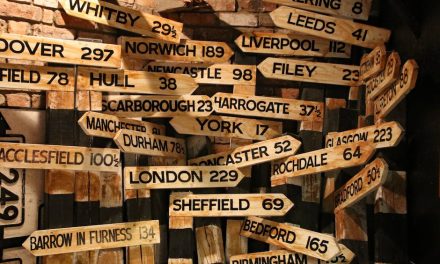Table of Contents
- Introduction
- Understanding the Unique Requirements of Designing for the Federal Government
- Overcoming Regulatory and Compliance Challenges in Federal Government Design Projects
- Leveraging User-Centered Design Principles in Federal Government Projects
- Exploring the Benefits and Opportunities of Designing for the Federal Government
- Q&A
- Conclusion
Designing for the Federal Government: Navigating Challenges, Unlocking Rewards.
Introduction
Designing for the Federal Government presents unique challenges and rewards. The federal government operates on a massive scale, serving diverse populations and addressing complex issues. Designers working in this context must navigate strict regulations, security concerns, and bureaucratic processes. However, the opportunity to make a significant impact on society and contribute to the public good can be immensely rewarding. This article explores the challenges and rewards of designing for the federal government, shedding light on the intricacies of this specialized field.
Understanding the Unique Requirements of Designing for the Federal Government

Designing for the Federal Government: Challenges and Rewards
Understanding the Unique Requirements of Designing for the Federal Government
Designing for the federal government presents a unique set of challenges and rewards. The federal government has specific requirements and regulations that must be adhered to when it comes to design projects. Understanding these requirements is crucial for designers who wish to work in this sector.
One of the main challenges of designing for the federal government is the extensive regulations that must be followed. The federal government has strict guidelines for everything from color choices to font sizes. These regulations are in place to ensure consistency and accessibility across all government materials. Designers must be well-versed in these regulations and be able to incorporate them into their designs seamlessly.
Another challenge is the need for security and confidentiality. The federal government deals with sensitive information and designs must be created with this in mind. Designers must be aware of the security protocols and ensure that their designs do not compromise the safety of the information being conveyed. This often means working closely with government agencies and IT departments to ensure that all security measures are met.
Despite these challenges, designing for the federal government also offers many rewards. One of the main rewards is the opportunity to make a significant impact. Designers working in this sector have the chance to create designs that will be seen by millions of people and have a direct impact on government operations. Whether it’s designing a website that makes it easier for citizens to access government services or creating a logo that represents a government agency, the work of federal government designers can have a lasting impact.
Another reward is the stability and job security that comes with working for the federal government. The federal government is a large employer and there is a constant need for designers to create and update materials. This means that designers in this sector often have a steady stream of work and can enjoy the benefits of a stable job.
Additionally, designing for the federal government provides the opportunity to work on diverse projects. The federal government covers a wide range of agencies and departments, each with its own unique design needs. This means that designers in this sector have the chance to work on a variety of projects, from designing brochures for a national park to creating infographics for a government health campaign. This diversity keeps the work interesting and allows designers to continually learn and grow in their skills.
In conclusion, designing for the federal government comes with its own set of challenges and rewards. Understanding the unique requirements and regulations is crucial for designers who wish to work in this sector. While there are challenges such as strict regulations and security concerns, there are also rewards such as the opportunity to make a significant impact, job stability, and the chance to work on diverse projects. Designers who are up for the challenge will find that designing for the federal government can be a fulfilling and rewarding career choice.
Overcoming Regulatory and Compliance Challenges in Federal Government Design Projects
Designing for the Federal Government: Challenges and Rewards
Designing for the federal government can be a rewarding endeavor, but it also comes with its fair share of challenges. One of the biggest hurdles that designers face in federal government design projects is navigating the complex web of regulations and compliance requirements. These regulations are put in place to ensure that government agencies operate in a fair and transparent manner, but they can often be overwhelming for designers who are used to more creative freedom.
One of the main challenges in federal government design projects is the need to adhere to strict accessibility guidelines. Government agencies are required to make their websites and digital content accessible to individuals with disabilities, which means that designers must carefully consider factors such as color contrast, font size, and alternative text for images. This can be a daunting task, as designers must strike a balance between creating visually appealing designs and ensuring that they are accessible to all users.
Another challenge in federal government design projects is the need to comply with branding and identity guidelines. Government agencies have strict rules about how their logos, colors, and typography should be used, and designers must adhere to these guidelines to maintain consistency across all government communications. This can be limiting for designers who are used to having more creative freedom, but it is essential for maintaining a professional and cohesive brand image.
In addition to accessibility and branding guidelines, designers working on federal government projects must also navigate a complex procurement process. Government agencies are required to follow strict procurement regulations to ensure fair competition and transparency in the selection of design vendors. This means that designers must be prepared to submit detailed proposals, participate in competitive bidding processes, and comply with strict deadlines. While this process can be time-consuming and bureaucratic, it is necessary to ensure that taxpayer dollars are spent wisely and that the best design solutions are selected.
Despite these challenges, there are also many rewards to be found in designing for the federal government. One of the main rewards is the opportunity to make a positive impact on society. Government agencies work on a wide range of projects that aim to improve the lives of citizens, from healthcare initiatives to environmental conservation efforts. By designing for these projects, designers have the chance to contribute to the greater good and create designs that have a lasting impact.
Another reward of designing for the federal government is the opportunity to work with a diverse range of stakeholders. Government projects often involve collaboration with multiple agencies, departments, and stakeholders, which can provide designers with valuable insights and perspectives. This collaborative approach can lead to more innovative and effective design solutions that address the unique needs of different user groups.
In conclusion, designing for the federal government comes with its fair share of challenges, particularly in terms of navigating regulatory and compliance requirements. However, the rewards of working on government projects, such as making a positive impact on society and collaborating with diverse stakeholders, make it a worthwhile endeavor for designers. By understanding and embracing the unique challenges of federal government design projects, designers can create designs that not only meet regulatory requirements but also make a lasting impact on society.
Leveraging User-Centered Design Principles in Federal Government Projects
Designing for the Federal Government: Challenges and Rewards
Leveraging User-Centered Design Principles in Federal Government Projects
Designing for the federal government presents a unique set of challenges and rewards. The federal government is responsible for providing services to millions of citizens, and ensuring that these services are accessible and user-friendly is of utmost importance. This is where user-centered design principles come into play. By focusing on the needs and preferences of the end-users, designers can create solutions that are effective, efficient, and satisfying.
One of the main challenges in designing for the federal government is the sheer scale of the projects. Federal agencies often have complex systems and processes that need to be streamlined and made more user-friendly. This requires a deep understanding of the users and their needs. User research is a critical component of the design process, as it helps designers gain insights into the users’ goals, motivations, and pain points.
Another challenge is the need to comply with strict regulations and guidelines. The federal government has specific requirements for accessibility, security, and privacy that must be adhered to. Designers must ensure that their solutions meet these requirements while still providing a seamless user experience. This requires a careful balance between compliance and creativity.
Despite these challenges, designing for the federal government can be highly rewarding. The impact of well-designed solutions can be far-reaching, improving the lives of millions of citizens. By leveraging user-centered design principles, designers can create solutions that are intuitive, efficient, and inclusive. This not only enhances the user experience but also increases user satisfaction and trust in the government.
User-centered design principles emphasize the importance of involving users throughout the design process. This means conducting user research, usability testing, and gathering feedback at every stage. By involving users early on, designers can identify potential issues and make informed design decisions. This iterative approach ensures that the final solution meets the needs of the users and aligns with their expectations.
In addition to user research, designers must also consider the unique needs of different user groups. The federal government serves a diverse population, including individuals with disabilities, non-English speakers, and older adults. Designers must take into account these diverse needs and ensure that their solutions are accessible and inclusive. This may involve providing alternative formats, multilingual support, or assistive technologies.
Another important aspect of designing for the federal government is collaboration. Federal agencies often work together on large-scale projects, and designers must collaborate with various stakeholders, including subject matter experts, policymakers, and IT professionals. This collaboration ensures that the design solution aligns with the agency’s goals and objectives and can be implemented effectively.
In conclusion, designing for the federal government presents unique challenges and rewards. By leveraging user-centered design principles, designers can create solutions that are effective, efficient, and satisfying for the end-users. User research, compliance with regulations, and collaboration are key components of the design process. Despite the challenges, the impact of well-designed solutions can be far-reaching, improving the lives of millions of citizens and enhancing trust in the government. Designing for the federal government is not just about creating visually appealing interfaces; it is about creating solutions that truly meet the needs of the users and make a positive impact on society.
Exploring the Benefits and Opportunities of Designing for the Federal Government
Designing for the Federal Government: Challenges and Rewards
Designing for the Federal Government presents a unique set of challenges and rewards for designers. The federal government is a massive entity with a wide range of agencies and departments, each with its own specific needs and requirements. However, the opportunities for designers to make a significant impact on society and contribute to the greater good are immense.
One of the primary challenges of designing for the federal government is navigating the complex bureaucratic processes. The government operates under strict regulations and procedures, which can sometimes slow down the design process. Designers must be patient and persistent, working closely with government officials to ensure that their designs meet all necessary requirements.
Another challenge is the need to balance creativity with practicality. While designers are often encouraged to think outside the box and push boundaries, the federal government requires designs that are not only visually appealing but also functional and cost-effective. Designers must find innovative solutions that meet the needs of the government while staying within budget constraints.
Despite these challenges, designing for the federal government offers numerous rewards. One of the most significant rewards is the opportunity to make a positive impact on society. Government agencies and departments work on projects that directly affect the lives of millions of people. Designers have the chance to contribute to initiatives that improve healthcare, education, transportation, and many other aspects of daily life.
Designing for the federal government also provides designers with a platform to showcase their skills and expertise. The government is a high-profile client, and successful projects can lead to increased visibility and recognition within the design industry. This can open doors to new opportunities and collaborations with other influential organizations.
Furthermore, working with the federal government allows designers to gain valuable experience and knowledge. The government operates on a massive scale, and designers have the chance to work on projects that are larger and more complex than those in the private sector. This experience can enhance their skills and make them more marketable in the future.
In addition to these benefits, designing for the federal government offers financial stability. Government contracts often provide a steady stream of work and reliable payment. This stability can be particularly appealing for designers who are starting their careers or looking for a more secure income.
To succeed in designing for the federal government, designers must be adaptable and open to collaboration. They must be willing to work within the constraints of the government’s regulations and procedures while still pushing the boundaries of creativity. Effective communication and strong project management skills are also essential to navigate the bureaucratic processes and ensure that projects are completed on time and within budget.
In conclusion, designing for the federal government presents both challenges and rewards. While navigating the complex bureaucratic processes and balancing creativity with practicality can be demanding, the opportunity to make a positive impact on society and gain valuable experience is immensely rewarding. Designers who are willing to embrace these challenges and work closely with government officials can find immense satisfaction in designing for the federal government.
Q&A
1. What are some challenges of designing for the federal government?
Designing for the federal government often involves navigating complex bureaucratic processes, strict regulations, and multiple stakeholders with varying priorities.
2. What are some rewards of designing for the federal government?
Designing for the federal government provides an opportunity to work on projects that have a significant impact on society, contribute to public service, and address important national issues.
3. How does designing for the federal government differ from other design projects?
Designing for the federal government requires a deep understanding of government processes, compliance with regulations, and the ability to work within established frameworks and guidelines.
4. What skills are important for designers working in the federal government?
Designers working in the federal government should have strong communication and collaboration skills, an understanding of government policies and regulations, and the ability to adapt to changing requirements and priorities.
Conclusion
In conclusion, designing for the federal government presents unique challenges and rewards. The complex nature of government systems, regulations, and stakeholders requires designers to navigate through various constraints and considerations. However, the opportunity to contribute to public service and make a positive impact on society can be highly rewarding. By understanding the specific needs and goals of government agencies, designers can create effective and user-centric solutions that enhance the delivery of public services.




